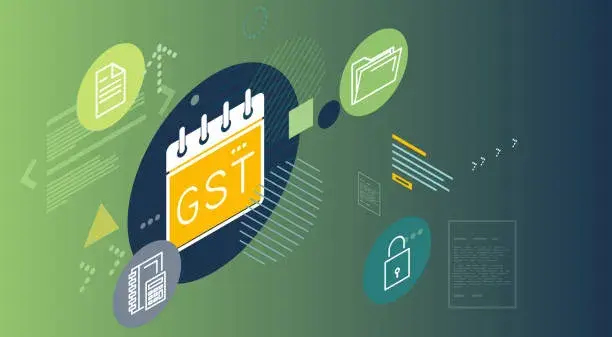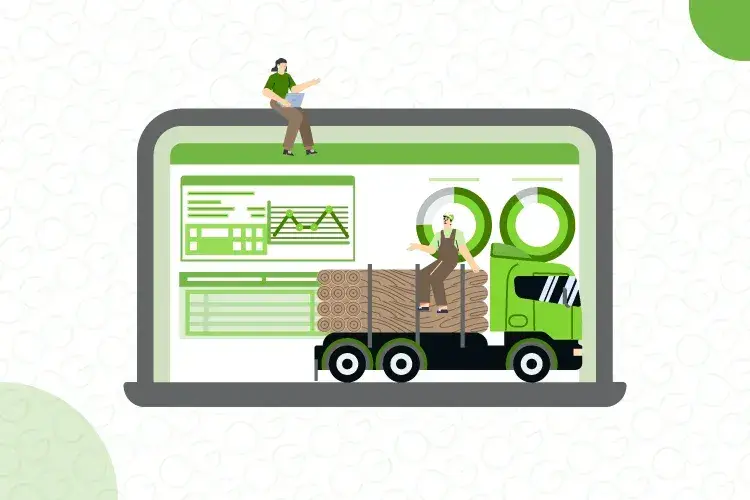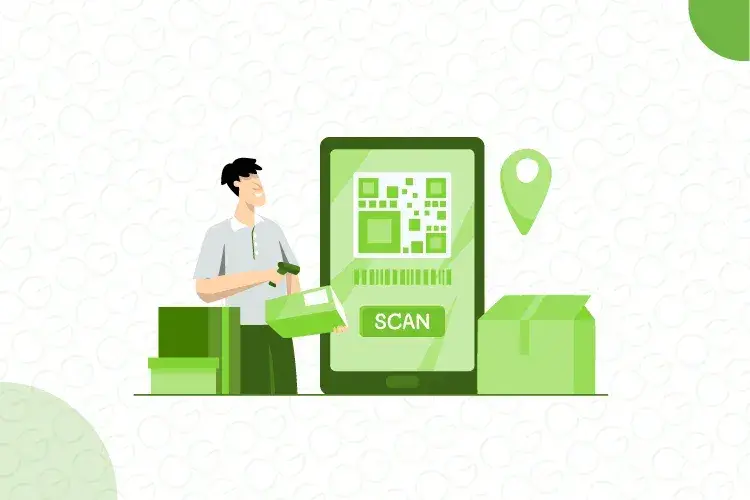Leveraging Technology for Flawless GST Compliance

Do you remember the days where you used to file GST manually with lots of effort, time and money? But don’t worry those are going to fade very fast in India. Technological advancements are transforming GST compliance in India.
It's become:
- More Efficient
- Less Time-Consuming
- Even User-Friendly
Businesses can now focus on what they do best – growing their operations – while technology takes care of the tax complexities.
Let's learn how technology is impacting the way GST Compliance operates in India.
Efficiency in GST Compliance:
Imagine concentrating more of your time on growing your business and less time on struggling with tax documents. That's the wonder of modern technology and India's GST (Goods and Services Tax)!
Do you remember the mountains of tax paperwork? It is now simple thanks to technology.
These days:
- You can File Returns
- Upload Invoices
- Make Payments online through GST portals
No missing documents or endless late-night filing sessions!
Tax calculations done by hand have a chance to go wrong. By automating calculations based on your business transactions, technology reduces the stress. You avoid paying a fine for errors and save time by doing this.
In short, technology streamlines the entire GST process, making it more efficient and less time-consuming.
Reduced Compliance Costs:
Indirect taxes, like GST in India, can be a significant cost factor for businesses. But what if there was a way to streamline compliance and reduce the associated expenses? The answer lies in technology.
Especially small and medium-sized enterprises (SMEs) with limited resources, can leverage technological advancements to save on indirect tax compliance costs:
Automated Calculations, Reduced Errors: Errors can occur while calculating tax liabilities by hand. By automating these calculations based on your transactions, technology reduces the possibility of errors that could result in penalties.
In addition to saving money and time, this reduces the anxiety associated with possible tax audits.
Digital Filing Systems, No Paperwork: One important benefit of online filing systems is the decrease in paperwork.
Businesses can electronically :
- File Tax Returns
- Upload Invoices
- Make Payments
Using these services.
Just think of the time that would be saved by getting rid of paper trails and urgent searches for lost documents! This lowers the storage expenses related to keeping physical records as well.
Self-Service Support and Reduced Reliance on Consultants: SMEs no longer have to hire expensive tax advisers to answer basic tax issues.
Multiple GST Software (EaseMyGST) provide constant access to tutorials, FAQs, and even chat help tailored to solve questions about GST. Businesses can now independently manage their fundamental tax requirements and avoid paying consulting fees. Choosing the Right GST Software can help you manage this chores and focus on your business as a whole.
These technological advancements are particularly beneficial for SMEs. With limited resources at their disposal, even minor cost savings can have a significant impact on their bottom line.
By adopting these technological advances, businesses - SMEs in particular-
- Can Reduce Compliance Expenses
- Optimise Workflows
- Free up Valuable Resources
To Support their Growth.
Enhanced Transparency
For governments, indirect taxes such as GST act as an essential source of income. However, making sure everyone contributes fairly might be difficult. Fortunately, the emergence of digital platforms and real-time reporting tools is bringing in a new era of transparency in the indirect tax system.
Everyone benefits from the move toward digital platforms and real-time reporting. Companies win from a more streamlined and effective tax filing process, and tax authorities get insightful information for improved oversight. In the end, it creates a more equal and open system that is ultimately beneficial to all parties.
Improved Tax Administration:
Technology is transforming tax administration, allowing authorities to guarantee more compliance and speed up procedures. Even though EaseMyGST's main purpose is to make tax filing for businesses easier, the following elements are essential to better tax administration:
Enhanced Data Visibility: Traditionally, tax authorities relied on information submitted by taxpayers. EaseMyGST, as an ASP, acts as a bridge, facilitating the electronic filing of GST returns (GSTRs) directly to the GST Network (GSTN) portal.
Data Analytics for Risk Assessment:
Prior to technology, tax authorities relied on manual processes to identify potential tax irregularities. EaseMyGST, along with the GSTN portal, facilitates the use of data analytics tools. These tools analyse large volumes of GSTR data, identifying patterns and inconsistencies that suggest potential tax risks.
While EaseMyGST empowers businesses with a user-friendly platform, it also acts as a valuable tool for tax authorities. The accurate and timely filing of GSTRs facilitated by EaseMyGST contributes to a more robust tax administration framework.
Business Insights and Decision-making:
Indirect tax data is frequently seen as a compliance burden, but EaseMyGST turns it into a strategic asset. EaseMyGST enables businesses to make informed decisions in a variety of departments by gathering comprehensive data on transactions and tax rates.
Companies can use this data analysis to determine the tax implications of various offerings, which enables them to create profitable pricing plans. Furthermore, comparisons with rivals are made possible by industry tax data integrations (where available), which may highlight areas where pricing might be optimised to gain a competitive advantage.
Even though EaseMyGST may not have advanced analytical capabilities on its own, the extensive data it collects enables companies to fully utilise the potential of their indirect tax information.
Through the use of customised reports or third-party analytics software, this important data may be utilised to improve
- Profitability
- Facilitate better departmental decision-making
- Provide an advantage over competitors
Ease of Cross-border Transactions:
Cross-border transactions have historically been complicated by complex paperwork, difficulties at customs, and making sure regulations are followed. Thank goodness, technology has stepped in to make this procedure more efficient.
Think about a time when the piles of paper customs declarations were replaced by computerised ones. As one-stop shops, integrated commerce platforms can simplify checks for compliance and speed up the flow of products.
For companies who deal internationally, this connects to faster delivery times and possibly lower costs.
Promotion of Digital Economy:
Clear tax laws and easy compliance promote the growth of the digital economy. This is becoming possible thanks to developments in indirect taxation technology, such as e-invoice / e-way bill systems and GST e-filing.
Consider companies navigating the digital market with confidence and less burden and with improved procedures.
- Faster Transactions,
- Cheaper Expenses
- Greater Resources for Development
are the results of this.
Technology is driving the expansion of digital services, e-commerce, and the whole digital economy by fostering a favourable regulatory environment.
Adaptation to Future Changes:
Both the corporate environment and the tax code are changing. Paper-based, outdated tax systems find it difficult to stay up to date. Technology really reflects here.
Indirect tax systems with technology support, such as those created for GST compliance, are incredibly flexible. They can be set up to take into account modifications to product classifications, tax rates, or even completely new tax systems. Businesses don't have to deal with the difficulties of manual upgrades and expensive system changes.



